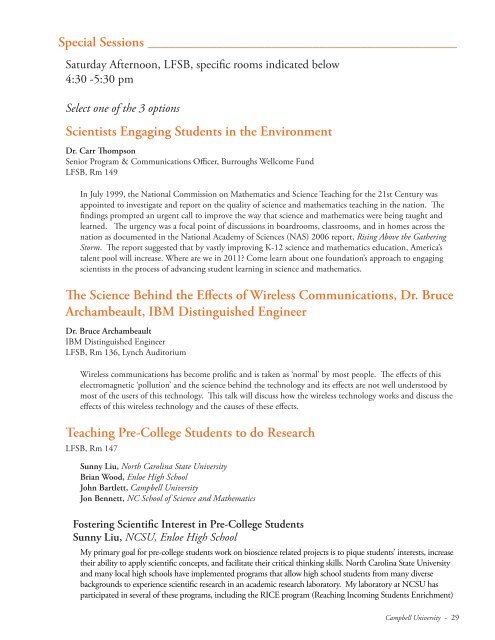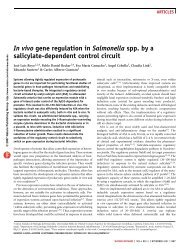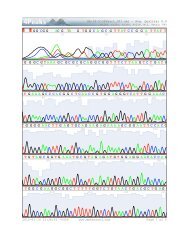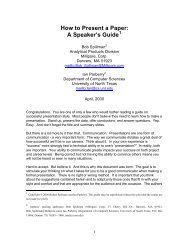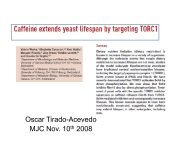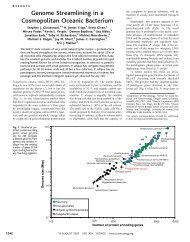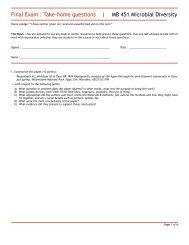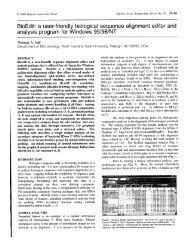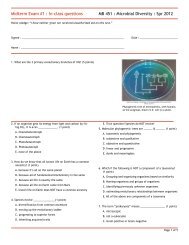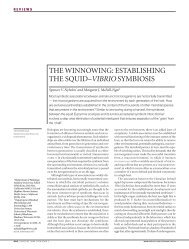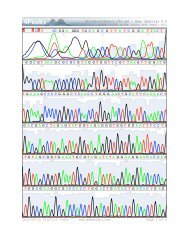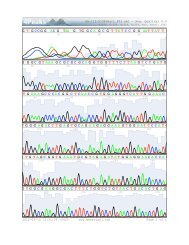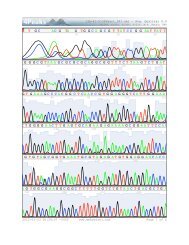Schedule and Program - North Carolina Academy of Science
Schedule and Program - North Carolina Academy of Science
Schedule and Program - North Carolina Academy of Science
You also want an ePaper? Increase the reach of your titles
YUMPU automatically turns print PDFs into web optimized ePapers that Google loves.
Special Sessions______________________________________________Saturday Afternoon, LFSB, specific rooms indicated below4:30 -5:30 pmSelect one <strong>of</strong> the 3 optionsScientists Engaging Students in the EnvironmentDr. Carr ThompsonSenior <strong>Program</strong> & Communications Officer, Burroughs Wellcome FundLFSB, Rm 149In July 1999, the National Commission on Mathematics <strong>and</strong> <strong>Science</strong> Teaching for the 21st Century wasappointed to investigate <strong>and</strong> report on the quality <strong>of</strong> science <strong>and</strong> mathematics teaching in the nation. Thefindings prompted an urgent call to improve the way that science <strong>and</strong> mathematics were being taught <strong>and</strong>learned. The urgency was a focal point <strong>of</strong> discussions in boardrooms, classrooms, <strong>and</strong> in homes across thenation as documented in the National <strong>Academy</strong> <strong>of</strong> <strong>Science</strong>s (NAS) 2006 report, Rising Above the GatheringStorm. The report suggested that by vastly improving K-12 science <strong>and</strong> mathematics education, America’stalent pool will increase. Where are we in 2011? Come learn about one foundation’s approach to engagingscientists in the process <strong>of</strong> advancing student learning in science <strong>and</strong> mathematics.The <strong>Science</strong> Behind the Effects <strong>of</strong> Wireless Communications, Dr. BruceArchambeault, IBM Distinguished EngineerDr. Bruce ArchambeaultIBM Distinguished EngineerLFSB, Rm 136, Lynch AuditoriumWireless communications has become prolific <strong>and</strong> is taken as ‘normal’ by most people. The effects <strong>of</strong> thiselectromagnetic ‘pollution’ <strong>and</strong> the science behind the technology <strong>and</strong> its effects are not well understood bymost <strong>of</strong> the users <strong>of</strong> this technology. This talk will discuss how the wireless technology works <strong>and</strong> discuss theeffects <strong>of</strong> this wireless technology <strong>and</strong> the causes <strong>of</strong> these effects.Teaching Pre-College Students to do ResearchLFSB, Rm 147Sunny Liu, <strong>North</strong> <strong>Carolina</strong> State UniversityBrian Wood, Enloe High SchoolJohn Bartlett, Campbell UniversityJon Bennett, NC School <strong>of</strong> <strong>Science</strong> <strong>and</strong> MathematicsFostering Scientific Interest in Pre-College StudentsSunny Liu, NCSU, Enloe High SchoolMy primary goal for pre-college students work on bioscience related projects is to pique students’ interests, increasetheir ability to apply scientific concepts, <strong>and</strong> facilitate their critical thinking skills. <strong>North</strong> <strong>Carolina</strong> State University<strong>and</strong> many local high schools have implemented programs that allow high school students from many diversebackgrounds to experience scientific research in an academic research laboratory. My laboratory at NCSU hasparticipated in several <strong>of</strong> these programs, including the RICE program (Reaching Incoming Students Enrichment)Campbell University - 29


